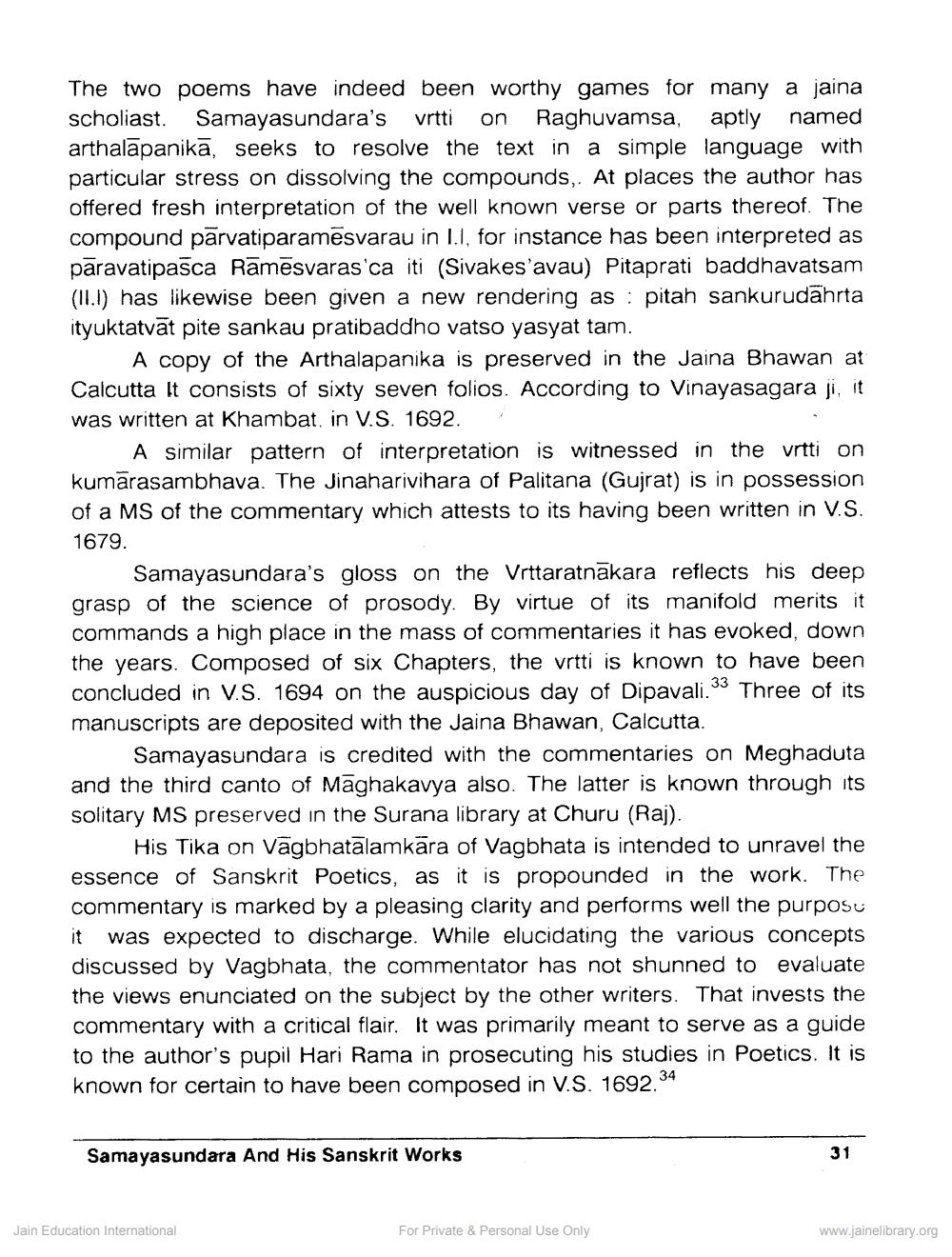________________
The two poems have indeed been worthy games for many a jaina scholiast. Samayasundara's vrtti on Raghuvamsa, aptly named arthalapanika, seeks to resolve the text in a simple language with particular stress on dissolving the compounds, At places the author has offered fresh interpretation of the well known verse or parts thereof. The compound pārvatiparamēsvarau in 1.1, for instance has been interpreted as pāravatipasca Rāmēsvaras'ca iti (Sivakes'avau) Pitaprati baddhavatsam (11.1) has likewise been given a new rendering as : pitah sankurudahrta ityuktatvāt pite sankau pratibaddho vatso yasyat tam.
A copy of the Arthalapanika is preserved in the Jaina Bhawan at Calcutta It consists of sixty seven folios. According to Vinayasagara ji, it was written at Khambat. in V.S. 1692.
A similar pattern of interpretation is witnessed in the vrtti on kumarasambhava. The Jinanarivihara of Palitana (Gujrat) is in possession of a MS of the commentary which attests to its having been written in V.S. 1679.
Samayasundara's gloss on the Vrttaratnakara reflects his deep grasp of the science of prosody. By virtue of its manifold merits it commands a high place in the mass of commentaries it has evoked, down the years. Composed of six Chapters, the vrtti is known to have been concluded in V.S. 1694 on the auspicious day of Dipavali." Three of its manuscripts are deposited with the Jaina Bhawan, Calcutta
Samayasundara is credited with the commentaries on Meghaduta and the third canto of Maghakavya also. The latter is known through its solitary MS preserved in the Surana library at Churu (Raj).
His Tika on Vagbhatālamkāra of Vagbhata is intended to unravel the essence of Sanskrit Poetics, as it is propounded in the work. The commentary is marked by a pleasing clarity and performs well the purposu it was expected to discharge. While elucidating the various concepts discussed by Vagbhata, the commentator has not shunned to evaluate the views enunciated on the subject by the other writers. That invests the commentary with a critical flair. It was primarily meant to serve as a guide to the author's pupil Hari Rama in prosecuting his studies in Poetics. It is known for certain to have been composed in V.S. 1692.34
Samayasundara And His Sanskrit Works
Jain Education International
For Private & Personal Use Only
www.jainelibrary.org




